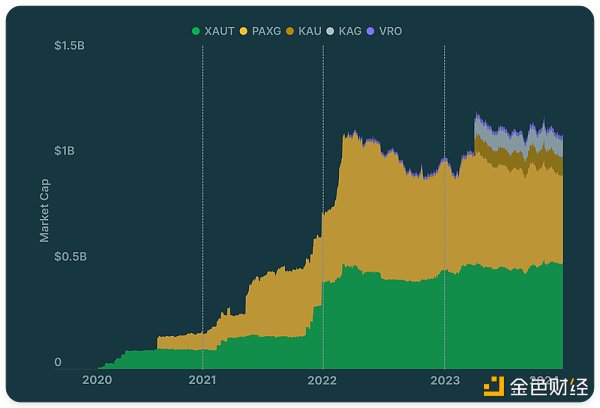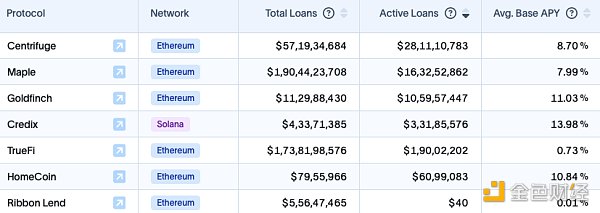Author: Arjun Chand, Bankless; Translator: Baishui, Golden Finance
Are Real-World Assets the Next Frontier in Cryptocurrency?
Real-World Assets (RWAs) are the talk of the town. Big names like BlackRock are getting into RWAs, Tether is launching its own platform, and the numbers are impressive—RWA tokens hit a record $2.7 billion market cap in February.
With so many major drivers, the RWA narrative is expected to come into focus in the second half of 2024.
This article provides an overview of RWAs, highlighting the different types of real-world assets being tokenized and the standout projects to watch.
What’s Next for RWAs?
RWAs are one of the fastest growing areas in cryptocurrencies. Many see it as a way to tap into trillions in assets around the world, driving growth across the industry.
Larry Fink, CEO of BlackRock, calls RWAs “the next generation of the market.” Boston Consulting Group predicts that converting these assets into tokens could unlock a $16 trillion opportunity by 2030.
However, so far, only one asset has been successfully tokenized and fully integrated into the crypto ecosystem: fiat currency in the form of stablecoins.
Stablecoins are the first, largest, and most mature RWAs. They have found a product-market fit for cryptocurrencies and see strong demand for different services, and are a fundamental component of every crypto ecosystem.
But what else is there in the RWA space besides stablecoins?
In recent years, we’ve seen a growing trend of various real-world assets being tokenized and put on-chain. Let’s look at some of the most popular types.
Commodities, Stocks, and Funds
Commodities such as gold, silver, and crude oil are commonly traded on various exchanges around the world. These natural resources can be tokenized to represent shares of the actual commodity, just like stablecoins do for fiat currencies.
Precious metals, especially gold, have gained the most attention as RWAs in the cryptocurrency space so far. Tokens such as PAX Gold (PAXG) and Tether Gold (XAUT) are leading the way, with gold-backed RWAs accounting for 83% of the commodity token market cap, as reported by CoinGecko.

Gold’s dominance shows how nascent the RWA industry is. However, several projects are experimenting with different commodities. For example, the Uranium308 project has launched a token pegged to the price of a pound of U3O8 uranium compound.
As the RWA tokenization space matures, we may see tokens for other commodities like crude oil and even crops like corn. The argument is that more global transactions will move to blockchains in the future.
Similar to commodities, stocks and mutual funds can also be tokenized. These assets are the mainstay of traditional financial markets, but their adoption in the cryptocurrency space has been slow, largely due to regulatory hurdles.
Complying with laws across jurisdictions is difficult, with many projects requiring licenses and facing restrictions such as excluding users from certain countries or meeting strict KYC and AML standards.
Despite these challenges, some projects, such as Swarm and Backed, have navigated the regulatory maze to allow on-chain trading of global stocks and funds, such as COIN and NVDA for the US market, and index funds such as the core S&P 500 index.
Treasuries
Treasuries refer to tokenized government debt instruments. Traditionally, these instruments are safe, yield-generating assets issued by governments.
After the pandemic, historically low Treasury rates rose as the Federal Reserve adjusted monetary policy in response to economic changes. By October 2023, short-term Treasury yields had climbed from near zero to about 5.4%.
Rising interest rates have spurred the launch of projects to tokenize U.S. Treasuries, some notable examples of which are:
Franklin Templeton — launched the Franklin On-Chain U.S. Government Money Fund (FOBXX) in 2021, the first public blockchain fund registered in the U.S. With a yield of 5.11% and a market cap of $365 million, it ranks among the largest on-chain funding products.
BlackRock — launched the BlackRock USD Institutional Digital Liquidity Fund ($BUIDL) on Ethereum in March 2024. It currently manages over $375 million in assets, leading the on-chain treasury fund market.
Ondo — Launched the Ondo Short-Term U.S. Government Bond (OUSG), offering short-term U.S. Treasuries with a yield of 4.68% and a market cap of approximately $140 million. A large portion of OUSG is invested in BlackRock’s BUIDL. Ondo also offers the USDY yielding stablecoin with a market cap of over $120 million.

This category has seen significant growth as Treasury yields become more attractive as interest rates rise. Other notable projects in the space include Superstate, Maple, Backed, OpenEden, and others.
On-Chain Private Credit
Private credit involves financial institutions lending to businesses through debt instruments (essentially loans).
In the context of the crypto RWA space, these loans are tokenized through credit protocols, allowing lenders to provide capital to these institutions in exchange for a yield.
In traditional finance, private credit is a massive $1.6 trillion market, and it is slowly carving out a significant niche in the crypto space.
Crypto credit protocols have tokenized over $4.4 billion in loans, of which over $600 million is currently loaned to real-world businesses, generating returns for on-chain lenders.
For on-chain investors, private credit presents an attractive proposition due to its higher yield potential. For example, lending stablecoins through protocols like Centrifuge can yield an average annual interest rate of 8.7%, exceeding the 4-5% APR typically seen on platforms like AAVE, but with increased risk.
Major players in the private credit space include:

Real Estate
The real estate category in RWA focuses on tokenizing physical property such as homes, land, commercial buildings, and infrastructure projects.
Real estate is the world's largest asset class. But traditionally, real estate investment has required large amounts of capital due to the high cost of property. Enabling real estate to be traded on-chain through tokenization introduces a novel investment paradigm that enhances accessibility, enables fractional ownership, and has the potential to increase liquidity.
Nevertheless, real estate’s inherent illiquidity has limited the pace of its on-chain adoption. The protracted nature of real estate transactions and the small pool of buyers make it challenging to coordinate sellers and buyers on-chain, especially given that the industry has traditionally operated on legacy systems.
Projects like RealT Tokens are working to inject liquidity into the market by simplifying property division, allowing sellers to easily divide their assets and buyers to obtain tokenized shares.
In addition, platforms such as Parcl allow for speculation on the value of real estate in different locations (e.g., different cities in the United States) through its on-chain trading mechanism.
In the long run, all of these initiatives will make the real estate market more liquid.
Conclusion
The concept of RWAs promises to bring new levels of global access and liquidity to traditional assets such as real estate, commodities, and debt. If the bold predictions for RWAs come true, the tokenization of these assets will likely redefine how the world trades these assets, in turn bringing more people on-chain.
 JinseFinance
JinseFinance








